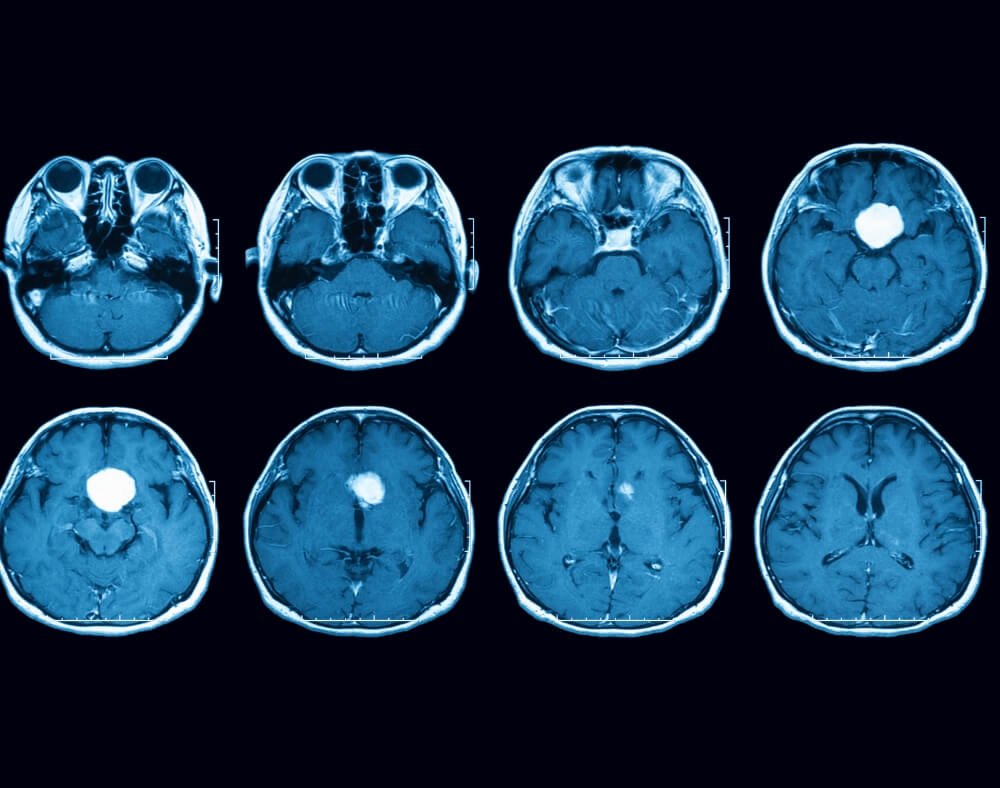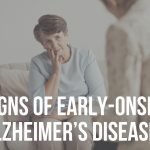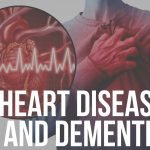Are Pick’s disease and dementia/Alzheimer’s disease in any way connected?
Around 50,000 to 60,000 Americans suffer from bvFTD (behavioral variant frontotemporal dementia).
It is one of the causes of dementia that specifically affects the temporal and frontal lobes in the brain.
This can also be referred to as Pick’s disease.
Reports indicate that it was first described in 1892 by Arnold Pick, a Czech psychiatrist and neurologist. The disease got its name from this doctor.
Contents
What Causes Pick’s Dementia?
Earlier on, frontotemporal dementia and the disease were terms that were used interchangeably. Today, the illness is understood to be one of the causes of frontotemporal dementia.
The illness develops when there is an abnormal collection of tau proteins in the temporal and frontal brain lobes
These protein clusters are called Pick bodies.
The Pick bodies interfere with the brain’s transport system, which means that nutrients do not get to their destination.
As a result, some brain cells begin to die off, causing irreversible brain damage. This ends up causing behavioral, emotional, and cognitive changes in a person’s functioning.
It is mainly because the frontal lobe of the brain controls essential facets of a person’s everyday life which can include multitasking, inhibition, judgment, and planning, among others.
The temporal lobe, on the other hand, primarily affects language. The same thing happens to individuals who have other types of dementia.
Symptoms of the Pick’s Disease

When a person has Pick’s illness, there are certain symptoms they can showcase, such as:
- Sudden mood changes
- Poor personal hygiene
- Depression-like symptoms like disinterest in activities or people they loved before
- Repetitive behavior
- Hard time keeping a job
- Withdrawal from social interactions/poor social skills
- Inappropriate or compulsive behavior
- Changes in eating habits where an individual starts to eat greedily or overeats consuming too many sweets or large amounts of alcohol. The person may end up gaining weight.
- Selfishness
- Agitation
- Changes in sexual behavior
- Childlike behaviors
- Apathy
- Irritability, etc.
A person may also experience neurological and language changes like:
- Reduced reading or writing skills
- Shrinking vocabulary
- Difficulties speaking, inability to speak, or trouble understanding what others are saying
- Repeating or echoing what another person says
- Stuttering
- Copying simple shapes with a paper and pencil becomes challenging
- Rigidity
- Physical weakness
- Muscle stiffness
Occasionally, people with the illness will also experience:
- Problems moving
- Challenges with incontinence
- Trouble with coordination
It is important to understand that the symptoms of this illness may vary widely from one individual to the next.
The symptoms of the illness are usually progressive which means that they become worse as times goes by.
The rate of worsening may also vary from one individual to another.
In most cases, memory loss does not happen immediately. This usually comes in in the later stages of the illness.
It is important to seek medical attention as soon as one spots any of the above symptoms. This is because an expert can differentiate between the disease and Alzheimer’s during early onset.
A person can also get Pick’s illness at an earlier age than what is common for Alzheimer’s.
Some people will develop the disease when they are in their 20s although most people will get a diagnosis from ages 45-70.
Studies also show that more men than women get the disease.
When to See a Doctor about The Illness

Changes in mood, personality, and behavior, especially in middle-aged persons, can be a signal of the disease.
It is advisable to consult a health care provider if these changes start to interfere with:
- How a person looks after themselves
- An individual’s interest in participating in activities they enjoy
- A person’s ability to maintain safety and health
- An individual’s ability to effectively work at their job
- A person’s ability to sustain relationships
- How an individual handles daily tasks
One of the reasons it is important to have symptoms thoroughly checked is the fact that a majority of conditions that lead to dementia are reversible.
These include both psychological and medical problems that affect middle-aged persons and seniors as well.
When you see a doctor on time, he or she will be in a position to treat the curable conditions or at least slow them down if they cannot be stopped.
Early diagnosis of the disease also facilitates the start of early treatment.
It is usually the best time because it enhances the chances of symptoms improving.
Furthermore, it also allows the person with the illness to have ample time to plan for their future.
It may include making the necessary arrangements for care when they are no longer in a position to fully take care of themselves or make sound decisions.
Diagnosing Pick’s Disease

To date, there is no single test that doctors can perform to confirm that an individual has the illness.
The only way to confirm that a person has the disease is by studying the brain directly to identify the swollen neurons and Pick bodies.
The brain needs to be biopsied to make this possible.
This implies that a neurosurgeon takes a small part of the brain for testing. A pathologist will then examine the brain tissue using a microscope.
This typically happens during an autopsy after death.
When a person is alive, doctors study a person’s medical history and use special imaging tests and other tools to perform the diagnosis.
After taking a complete medical history, a qualified medical practitioner may also:
- Ask the person to complete various writing and speech tests
- Conduct detailed neurological examination and physical examination
- Use PET, CT, MRI scans to look at the brain tissue
- Talk to family members to learn about an individual’s behavior
- Lab tests: These usually include blood tests so that the experts can rule out blood disorders, infections, hormonal disorders, chemical abnormalities, kidney or liver issues that may cause dementia symptoms
Biopsy is also becoming a popular method for offering a definite diagnosis when an individual is still breathing.
Many families are opting for this route because, in the absence of biopsy, diagnosis is based on symptoms plus ruling out other medical conditions.
Research suggests that about 25% of the people with this illness usually receive a gene from a parent that causes it.
It is still not clear what happens in other cases.
Treating Pick’s Disease

Just like the other forms of dementia, there are still no known cures for the illness.
However, doctors usually prescribe some treatments that can help deal with the symptoms of the disease.
For instance, a person may be under antipsychotics and antidepressants to help take care of behavioral and emotional changes.
The treatment aims to maximize the comfort and functioning of the people with the illness as much as possible.
Self-Care for People with Pick’s Disease

A person with Pick’s disease should try their best to remain socially, mentally, and physically active.
Some of the things that an individual can engage in include:
1. Physical exercise
It will help to maximize mind and body functions while maintaining a healthy weight. This does not have to be something strenuous.
Something simple like taking a brisk walk for at least twenty minutes a day might do the trick.
Consuming a balanced diet for all meals and avoiding smoking and drinking too much alcohol might also help.
2. Mental exercises
Individuals are advised to participate in as much mental activity as they can handle.
Experts believe that mental stimulation may slow down the progression of the illness.
Reading, games, puzzles, crafts, and safe hobbies are examples of some excellent choices.
We have an in-depth article written on cognitive and physical exercises for dementia.
3. Social interactions
These are not only enjoyable, but they are also stimulating for a majority of people with the disease.
Many community or senior centers have a long list of scheduled activities perfect for those people with the illness.
Research on the Illness
Many institutes, including NINDS (The National Institute of Neurological Disorders) continue to invest in the research of the disease.
Among the multiple research projects include studying the harmful effects of protein build-up and how this relates to the development of frontotemporal dementia.
Additionally, experts seek to identify the genes that are involved with this medical condition.
This can help to identify effective therapeutic approaches that will facilitate the delivery of normal genes in the hope that this will restore or enhance brain function.
Other research projects may also help people get a better understanding of the disease.
This is in regards to the doctors and caregivers who deal with people with the illness as well as the individuals who have the illness.
Life Expectancy and Prognosis

A person can live with Pick’s disease for an average of five-to-nine years.
Some people, however, survive for two decades or more with the illness.
During the early stages of the disease, a person may remain independent and able to do a majority of things on their own.
As time goes by, they may need assistance to complete their day-to-day activities well.
In the advanced stages of the illness, things typically take a different turn where an individual may need to be under 24/7 care.
As with any other dementia type, it is a challenging illness for the persons experiencing it as well as the caregivers.
A report by California University revealed that the symptoms usually progress over eight-to-ten years.
When the symptoms first start appearing, it may take several years before a person goes in for the correct diagnosis.
These are some of the factors that reduce the average span between diagnosis and death to less than ten years.
The origin of the illness remains unknown. Common causes of death may include skin infections, heart failure, urinary tract, and lung diseases.





![Is Dementia Inherited? [Know the Facts] Is dementia Inherited discussed](https://readementia.com/wp-content/uploads/2024/02/Is-dementia-Inherited-discussed-230x230.jpg)

